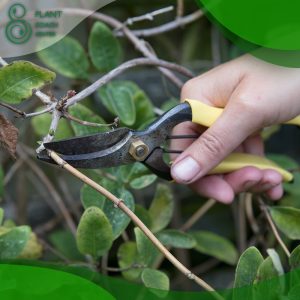When Do You Prune Lilacs?
Lilacs, with their enchanting blooms and captivating fragrances, stand as timeless symbols of beauty in the garden. Understanding the art of pruning is essential to maintain their splendor and ensure healthy growth. Welcome to a journey through the delicate balance of when and how to prune lilacs, where timing becomes a dance, and each cut a brushstroke of care.
Pruning is more than a horticultural task; it’s a science, an expression of partnership with nature. This article unravels the mysteries behind the optimal timing for lilac pruning, delving into the intricate choreography that guides the plant’s growth, flowering, and vitality.
From deciphering the language of your lilac bushes to mastering techniques that enhance their beauty, join us in discovering the secrets that empower you to sculpt vibrant, thriving lilacs. Whether you’re a seasoned gardener or embarking on your first pruning endeavor, the insights shared here on PlantCouchCenter.com will equip you to embrace the pruning shears with confidence and artistry.
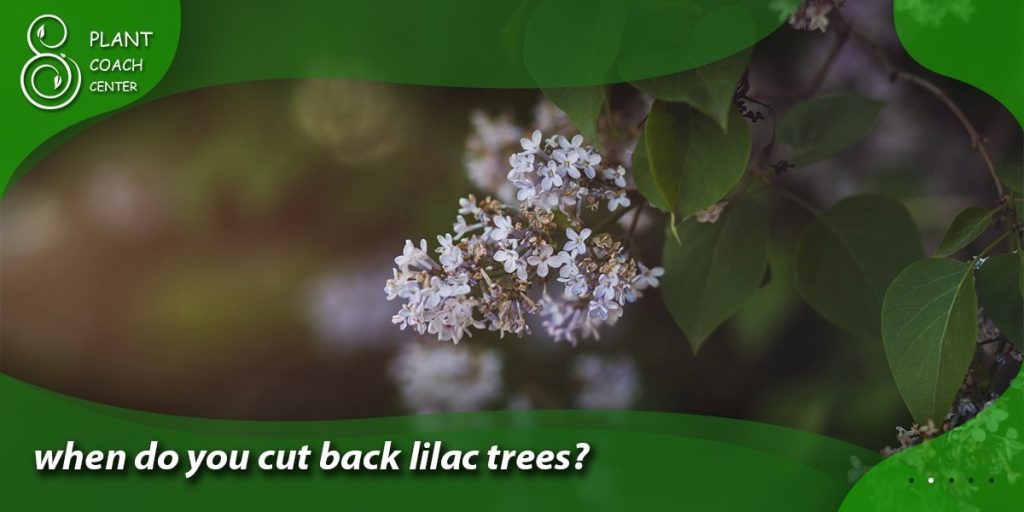
The Best Time to Prune Lilacs
Timing is the key to successful lilac pruning, as different seasons play a pivotal role in shaping your plants’ health and blooming potential. Understanding the nuances of each season empowers you to make the right cuts at the right time, ensuring that your lilac bushes thrive year after year.
Late Spring Elegance
After the lilac bushes have finished their breathtaking display of blooms, usually in late spring or early summer, it’s an ideal time for post-bloom pruning. This delicate pruning approach removes spent flower clusters, allowing the plant to channel its energy into producing new branches and buds for the following year’s spectacle.
Dormant Winter Renewal
The dormant period during winter, when lilac bushes have shed their leaves and entered a state of rest, presents an opportunity for rejuvenation pruning. This more substantial pruning involves removing older, thicker branches to stimulate the growth of new shoots. However, be cautious to avoid over-prune, as excessive cutting can impact the plant’s ability to produce flowers in the upcoming season.
Timing Matters
Avoid the temptation to prune in the fall, which can remove next year’s flower buds and disrupt the natural growth cycle. Likewise, mid-summer pruning can reduce flowering, removing potential flower buds forming on the current year’s growth. By respecting the unique growth patterns of lilac bushes and embracing the seasonal rhythms, you ensure that your pruning efforts result in a harmonious symphony of development, health, and vibrant blooms.
Unlocking Growth Secrets: The Science Behind Pruning Lilacs
Pruning is not just an art—it’s a science that profoundly influences the growth and development of lilac bushes. To understand how pruning works its magic, it’s essential to delve into the intricate physiological processes that underlie each cut.
Apical Dominance
At the heart of pruning’s impact lies the concept of apical dominance. The tip of a branch, known as the apical meristem, suppresses the growth of lateral buds along the stem. When you prune the apical meristem, the suppressed buds spring into action, developing new branches. This understanding guides how you can shape and direct the growth of your lilac bushes.
Hormonal Dance
Hormones play a crucial role in the response of lilac bushes to pruning. Auxins, a group of plant hormones, are produced in the apical meristem and influence apical dominance. When you prune a branch, you remove the source of auxins, allowing lateral buds to develop and branches to sprout. This hormonal shift redirects the plant’s energy toward these new growth points.
Flower Bud Formation
Pruning directly impacts flower bud formation. Lilacs typically bloom on old wood, meaning flower buds develop on the previous year’s growth. Careful pruning ensures you retain enough of this old wood to support robust flowering while encouraging the development of new shoots that will carry next year’s flower buds.
Wound Healing and Defense
Every pruning cut creates a wound on the plant. The plant responds by initiating a series of defense mechanisms, forming protective tissue to seal the wound. Proper pruning techniques, like making clean cuts at the right angles, facilitate efficient wound healing and prevent the entry of pathogens.
Timing’s Role
Understanding the science of lilac growth also emphasizes the importance of timing. Post-bloom pruning aligns with the natural hormonal changes, promoting efficient branching and blossoming. Similarly, dormant pruning during winter leverages the plant’s state of rest, encouraging the development of new shoots come spring.

Blossom-Boosting Techniques: Pruning for More Vibrant Blooms
Pruning lilac bushes isn’t just about maintaining their shape; it’s a strategic practice that can lead to more vibrant and abundant blooms. By employing specific techniques, you can channel the plant’s energy toward blossoms and enhance the overall beauty of your garden.
Deadheading
This simple yet effective technique removes faded flower clusters after the lilac blooming. Doing so redirects the plant’s energy away from seed production and toward developing new buds for the next blooming season. Deadheading extends the lilac’s flowering period and encourages it to produce more blossoms.
Rejuvenation Pruning
Rejuvenation pruning offers a fresh start for older lilac bushes that have become overgrown or sparse in terms of blooms. Over three years, remove about a third of the most aged wood annually. This process stimulates the growth of new shoots from the base, resulting in rejuvenated, bushier plants with better flower production.
Selective Branch Removal
Identify weak, diseased, or non-productive branches in terms of flowering. Selectively removing these branches allows the plant to direct resources toward healthier growth and more prolific blooming.
Balanced Shaping
Maintaining a balanced shape through pruning ensures that all parts of the lilac bush receive adequate sunlight and airflow. This, in turn, promotes consistent growth and flowering throughout the plant.
Timing
Pruning at the right time is essential. Remove spent flower clusters and any dead or diseased wood after the lilac blooms have faded in late spring or early summer. This timing optimizes the plant’s ability to develop new branches and flower buds for the following year.
Avoid Over-Pruning
While pruning is beneficial, excessive cutting can lead to stress and reduced blooming. Strike between removing old growth and preserving enough to support future blooms.
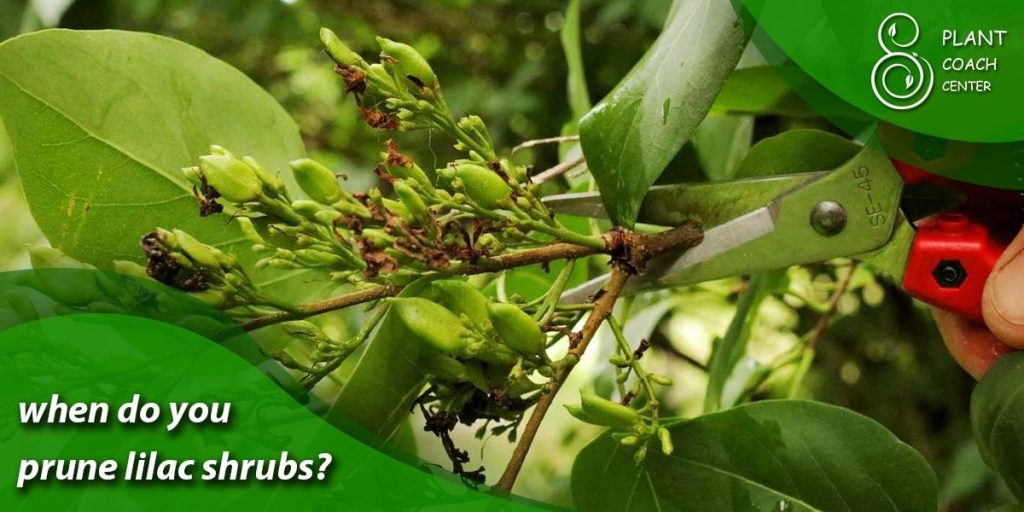
Varieties Matter: Customizing Pruning for Different Lilac Types
Lilacs come in a diverse array of varieties, each with its unique growth habits and flowering patterns. Customizing your pruning approach to match the specific requirements of these varieties is essential for nurturing their health and beauty. Let’s explore how to tailor your pruning techniques to different lilac types:
Common Lilacs (Syringa vulgaris)
The classic lilac, known for its intoxicating fragrance, blooms on old wood. Opt for post-bloom pruning in late spring or early summer to remove spent flower clusters and shape the plant. This approach encourages the development of new branches and flower buds for the following year.
French Hybrid Lilacs
French hybrids combine the best traits of common lilacs with other species. Some bloom on old wood, necessitating post-bloom pruning, while others flower on new wood, allowing for rejuvenation pruning in early spring. Research the specific hybrid you have to determine the best approach.
Dwarf Lilacs
These compact varieties require gentler pruning. Remove dead or weak growth after the bloom period and shape as needed to maintain their natural form. Avoid over-pruning, as their petite size already contributes to their charm.
Japanese Tree Lilacs (Syringa reticulata)
Pruning these lilacs involves a different strategy. They bloom on new wood, allowing for pruning in late winter or early spring. Remove older branches and shape them for optimal growth. Remember, they require less aggressive pruning compared to common lilacs.
Persian Lilacs (Syringa x persica)
These lilacs boast smaller, delicate flowers and require minimal pruning. After blooming, focus on light shaping and removing dead or damaged branches. Avoid aggressive cuts that could compromise their natural appearance.
Chinese Lilacs (Syringa chinensis)
With long panicles of flowers, these lilacs bloom on new wood. Prune in late winter or early spring, removing old and weak wood to promote new growth and blossoms.
Post-Bloom vs. Dormant Pruning
The timing of your lilac pruning endeavors is a crucial factor determining your efforts’ success. Understanding when to prune—right after the lilacs have bloomed or during their winter slumber—can significantly impact their growth, flowering, and overall health.
Post-Bloom Pruning
Pruning immediately after the lilacs have finished their stunning display of blooms, usually in late spring or early summer, is known as post-bloom pruning. This approach capitalizes on the plant’s natural energy allocation cycle. By removing spent flower clusters at this time, you divert the plant’s resources from seed production and toward developing new branches and flower buds for the following year. Post-bloom pruning enhances the lilac’s ability to produce abundant blossoms while maintaining its health and vitality.
Dormant Pruning
Dormant pruning occurs during the winter months when the lilac bushes have shed their leaves and entered a state of rest. This is a more substantial form of pruning that involves removing older, thicker branches to encourage the growth of new shoots come spring. However, caution is necessary to avoid over-pruning, which could reduce flowering in the upcoming season. Dormant pruning is best suited for cases where the lilac bushes have become overgrown or need rejuvenation.
When Your Lilac Bushes Signal Pruning Needs
Lilac bushes are skilled communicators, offering visual cues that indicate when they need pruning. Reading these signs from nature allows you to provide timely care that fosters healthier growth and more abundant blooms. Here are some signals to watch for:
Reduced Blooming
If your lilac bushes produce fewer blossoms than usual, it clearly indicates that pruning is in order. Reduced flowering can signify overgrown or exhausted branches that require rejuvenation. Pruning post-bloom redirects energy toward developing new components and flower buds, leading to a more prolific flowering in the next season.
Overcrowded Growth
Take a close look at the overall structure of your lilac bushes. If branches intersect, cross, or crowd each other, it’s time to prune. Overcrowded growth hinders air circulation and promotes disease. Selectively removing these branches encourages healthier development and reduces the risk of pest and pathogen issues.
Leggy Growth and Weak Stems
Tall, leggy growth with weak stems indicates that your lilac bushes are reaching for sunlight. This can lead to spindly growth prone to bending or breaking under the weight of flowers. Pruning away the taller development encourages more compact and sturdy growth, resulting in a more resilient plant.
Discolored or Dead Wood
Dead or diseased wood is a definitive signal for pruning. Brittle, discolored, or lifeless branches should be promptly removed to prevent disease spread and promote overall plant health.
Irregular Shape
If your lilac bushes are losing their natural shape due to uneven growth or sprawling branches, it’s time to employ selective pruning. Trimming to restore a balanced body enhances aesthetics and maintains the plant’s health.
Faded Blooms
Once the lilac blossoms have faded, you’ll notice that the flower clusters turn brown and droop. Removing these spent blooms, a process known as deadheading improves the plant’s appearance and encourages it to channel energy into developing new buds for the next season’s display.
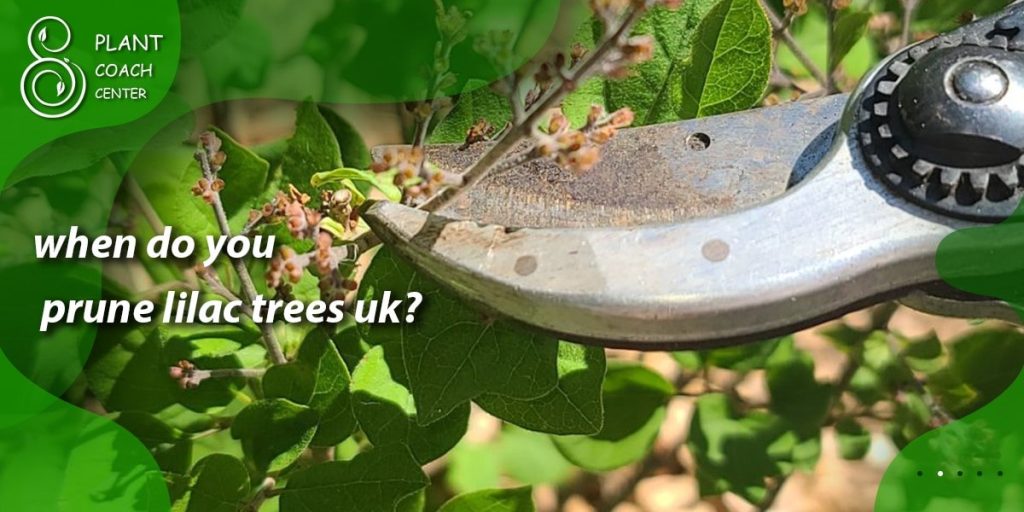
Common Pruning Pitfalls and How to Prevent Them
Pruning lilac bushes is a delicate practice that demands attention to detail and a steady hand. Avoiding common pitfalls ensures that your efforts result in healthier, more vibrant plants with splendid blooms. Here’s a rundown of some frequent mistakes and how to steer clear of them:
Over-Pruning
A common pitfall is getting carried away with pruning. Excessive cutting can weaken the plant, reduce flowering, and even shock the lilac bushes. To prevent this, adopt a conservative approach and focus on selective cuts that encourage growth while maintaining the overall structure.
Timing Blunders
Pruning at the wrong time, such as in the fall or mid-summer, can harm flowering. Avoid fall pruning, as it might remove next year’s flower buds. Mid-summer pruning disrupts the growth cycle, potentially leading to fewer blossoms. Stick to the appropriate pruning windows for optimal results.
Neglecting Proper Tools
Using dull or inappropriate tools can result in ragged cuts that stress the plant and invite disease. Invest in quality pruning shears, loppers, and saws to ensure clean and precise cuts that minimize damage and trauma to the lilac bushes.
Ignoring Hygiene
Pruning without practicing proper hygiene can inadvertently spread diseases from plant to plant. Always disinfect your tools between cuts or different plants to prevent the transmission of pathogens.
Blind Cuts and Incorrect Angles
Blind cuts made too close to the main stem can hinder proper healing, while cuts made too far from the branch can create stubs that attract pests and diseases. Make clean cuts at the right angle, about 1/4 inch above a healthy bud, to promote healing and minimize stress on the plant.
Neglecting the Branch Collar
The branch collar, a swollen area where a branch joins the main stem, plays a crucial role in healing. Incorrect cuts that remove or damage the branch collar impede healing and increase the risk of infections. Cut just outside the branch collar to promote proper healing.
Lack of Planning
Pruning without a clear plan can result in haphazard growth and an uneven appearance. Before making any cuts, step back and assess the lilac bush’s structure. Consider its natural shape and growth habits, and envision how your cuts will shape its growth.
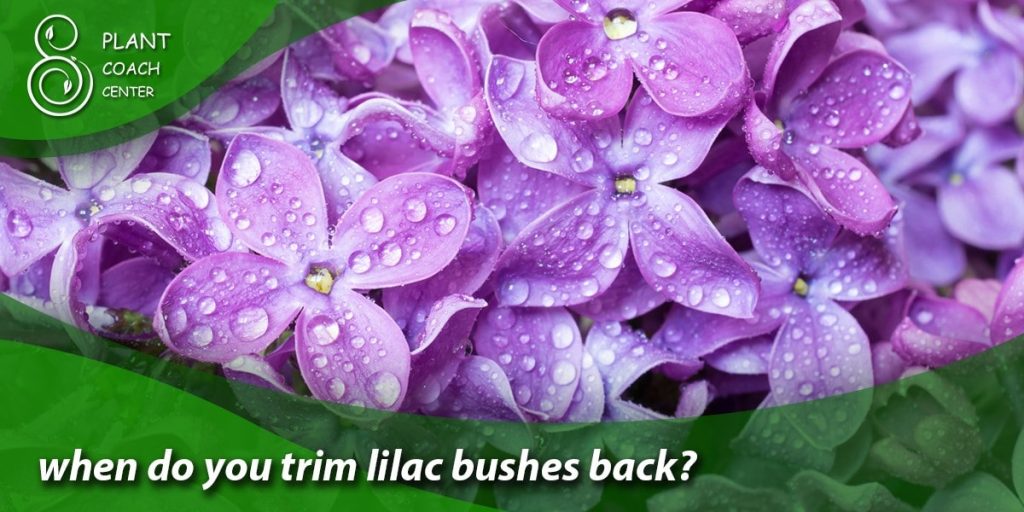
Conclusion
As we conclude our exploration into the art and science of pruning lilac bushes, it’s evident that this practice is a harmonious blend of knowledge, technique, and attentive observation. From deciphering nature’s signals to customizing pruning for different lilac varieties and understanding the science behind growth to avoiding common pitfalls, your journey has been one of empowerment and connection with your garden.
By embracing the right timing, techniques, and approaches, you become a steward of the lilac’s journey—nurturing it to flourish and enchant it with its blossoms. For further guidance, tools, and inspiration, visit PlantCouchCenter.com, where you’ll discover a wealth of resources to deepen your gardening prowess and continue cultivating nature’s beauty.
When is the best time to prune lilacs?
Prune lilacs right after they bloom in late spring or early summer for optimal results.
Can I prune lilacs in the fall?
It's best to avoid fall pruning, as it could remove next year's flower buds; post-bloom or dormant pruning is recommended.
How can I encourage more blooms on my lilacs?
Employ deadheading after blossoms fade and consider rejuvenation pruning to stimulate new growth and enhance future flowering.







